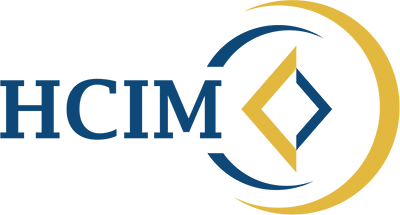The COVID-19 pandemic sent shockwaves through the healthcare industry, disrupting healthcare spending and utilization patterns, and leaving a noticeable impact on how we approach healthcare.
Recent data from the Health Care Cost Institute‘s 2021 health care cost and utilization report, a report based on a collection of claims from commercial payers like Aetna, Humana, Kaiser Permanente, and Blue Health Intelligence, takes a closer look at some of the trends and changes in healthcare expenditures during and in the wake of the pandemic.
In this blog post, we’ll discuss 5 key findings from the report and the implications the information presented has for patients and the healthcare industry as a whole.
1.
The COVID Effect
Just as the COVID-19 pandemic disrupted every aspect of our lives, it should be no surprise to discover that it also affected regular healthcare utilization.
Healthcare spending declined by 4% in 2020 as utilization decreased nationwide, an aberration in long-term spending trends, which had been growing steadily before the pandemic.
But, after a dramatic decline due to the COVID-19 pandemic, a year later, it appears that healthcare spending is on the rebound. By 2021, the average health spending for people with employer-sponsored coverage was $6,457, a 15% increase from the 2020 average of $5,630.
The pandemic represents a notable blip in healthcare spending and use patterns that had been observed before 2020.


2.
Recovering Utilization Trends
The report also indicates that care utilization, which had decreased by 7% from 2019 to 2020, was on the rise once more, increasing by 13% between 2020 and 2021.
This information indicates a recovery phase in healthcare utilization as individuals are again seeking and utilizing healthcare services, returning to more normal patterns of healthcare-seeking behavior.
From 2017 to 2021, spending per person increased $1,133 from $5,334 to $6,467 (21.2%). The increase in spending was driven by rising average prices, which grew close to 14% over 2017-21. In that period, there was a cumulative 7.1% increase in use [Figure 1].
Utilization was relatively flat over 2017-19, followed by a 7.5% drop in 2020 during the first year of the COVID-19 pandemic [Figure 2]. In 2021, there was a rebound in utilization, resulting in a 12.8% increase from 2020 to 2021 and a 7.1% cumulative increase over the five-year period. After average annual growth of close to 4% over 2017-2020, prices grew 2% in 2021, reflecting increased use of less costly (e.g., preventive) services as the initial phase of the COVID-19 pandemic ended and people returned to typical (i.e., pre-pandemic) use of health care services.


3.
Rising Healthcare Prices
Even though utilization and spending declined due to the pandemic, the report indicates that healthcare prices are climbing at a concerning rate.
Despite the decline in patient spending, healthcare prices have increased by 21% overall between 2017 and 2021, with the most significant increase being for inpatient hospital care, which grew by 28% during that four-year window.
While the prices of drugs and medicine tend to get the most political attention, hospital expenditures count for a large portion of health spending, so this is something to note.

Year-to-year changes in spending are the product of changes in utilization and changes in prices. Between 2017 and 2019, increases in spending largely reflected changes in prices while changes in utilization were much smaller. In 2020 and 2021, the substantial drop in utilization followed by the large rebound in use was the main factor driving spending.
4.
Prescription Drug Spending is on the Rise
In addition to rising healthcare prices, spending on prescription drugs is also continuing to climb. Per-person spending on prescription drugs, based on the cost at the point of sale, rose an alarming 29% between 2017 and 2021.
The area with the most considerable spending increase was immunological therapies, with these drugs seeing the largest price increases in tandem, followed closely by drugs f‹ hormone therapies, including insulin, birth control, and thyroid condition treatment.
Unlike every other aspect of healthcare spending, it didn’t seem that the 2020 pandemic affected drug spending at all.


5.
Implications and Affordability Challenges
The data analyzed in the report primarily focuses on employer-sponsored health plans, which typically offer generous coverage.
However, it is important to acknowledge that those enrolled in other types of coverage, such as Medicaid, Medicare, or individual markets, may face higher costs and financial strains due to these rising healthcare expenses.
Average prices increased across all subcategories of inpatient admissions between 2017 and 2021.
- Overall, the average price (x) for an inpatient admission was $26,979 in 2021, up from $21,089 in 2017.
- Average prices were highest, and increased most from 2017-2021, for transplants ($151,922 in 2021, up from
$113,123 in 2017). - The price of circulatory admissions and respiratory admissions, which made up the largest shares of inpatient spending in 2021, grew from $36,962 to $47,818 and $21,452 to $31,702, respectively between 2017 and 2021.
- The average price of childbirth/pregnancy admissions, which made up over 20% of inpatient admissions in 2021, was $9,823 in 2017 and $12,013 in 2021.
- The average price of an admission for cancer was $57,499 in 2021, up from $48.690 in 2017.

A Promising Outlook in 2023 and Beyond
The recent healthcare utilization data paints a hopeful picture of recovery and resilience. After a 2020 decline due to the COVID-19 pandemic, it is encouraging to see an upward trend in utilization as patients regain the confidence to seek healthcare once again on a routine basis.
As we move forward, healthcare organizations and policymakers must continue supporting and enhancing healthcare services to deliver quality care while never losing sight of the cost of care. By ensuring accessibility, affordability, and quality care, we can further strengthen the recovery process and promote overall health and well-being.



